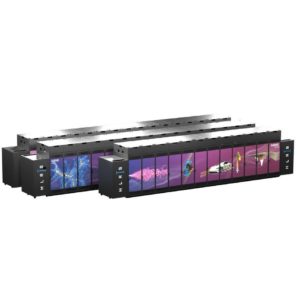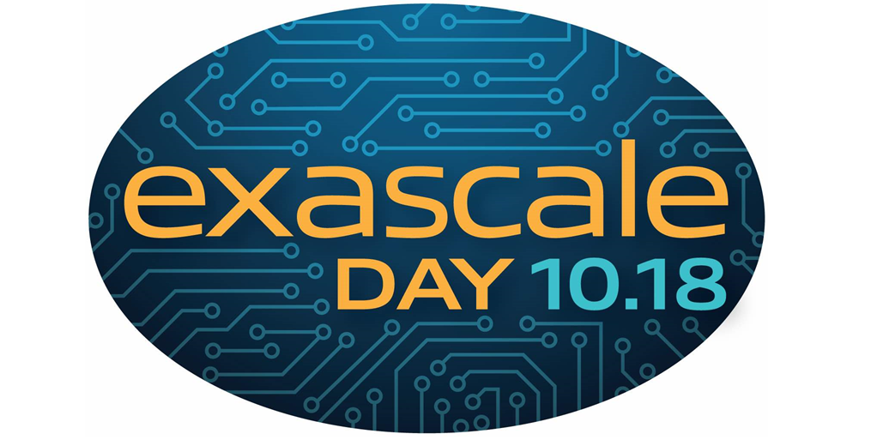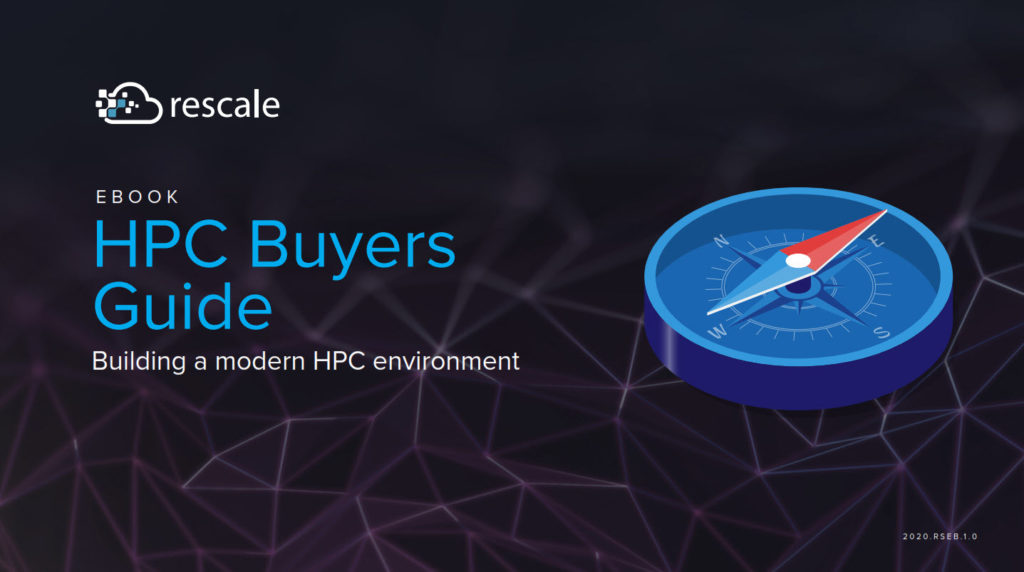 HLRS officially dedicated their new Hawk supercomputer computer this week at a ceremony in Stuttgart, Germany. With a peak performance of approximately 26 Petaflops, Hawk is an HPE Apollo 9000 System and is among the fastest supercomputers worldwide and the fastest general purpose system for scientific and industrial computing in Europe.
HLRS officially dedicated their new Hawk supercomputer computer this week at a ceremony in Stuttgart, Germany. With a peak performance of approximately 26 Petaflops, Hawk is an HPE Apollo 9000 System and is among the fastest supercomputers worldwide and the fastest general purpose system for scientific and industrial computing in Europe.
Hawk expands the University of Stuttgart’s already excellent research infrastructure with an additional flagship system,” said Prof. Wolfram Ressel, Rector of the University of Stuttgart. “It will enable cutting edge academic and industrial research in a wide range of contexts where simulation and Big Data play important roles. In this way the new high-performance computer also makes an important contribution to realizing the University of Stuttgart’s vision, Intelligent systems for a sustainable society.”
A central location for cutting-edge research
Hawk will play a central role in the German national and State of Baden-Württemberg high-performance computing strategies. Its inauguration marks the beginning of a new era for research in the computational sciences, simulation, and artificial intelligence in Germany and Baden-Württemberg, particularly with regard to their applications in engineering.
Computers like Hawk are tools for advanced research in the sciences and in industry,” said Parliamentary State Secretary Dr. Michael Meister. “They enable excellent science and innovation, and solidify Germany’s international position as a top location for supercomputing. High-performance computers also contribute to technological sovereignty in the digital age. For us, technological sovereignty means developing our own expertise in systems and applications that make science and industry competitive at the highest level. It is only in this way that we can guarantee a mutually reciprocal exchange with leading research centers and companies worldwide. Stuttgart’s ‘Hawk’ demonstrates this very clearly, because without the close cooperation between computing center and manufacturer, a system of this caliber would never have been possible.”
 Prime Minister Winfried Kretschmann explained, “With Hawk we can support key industries in the state of Baden-Württemberg, enabling fields like mobility, mechanical engineering, and health to take advantage of new opportunities using simulation. One of the fastest computers located at a public institution worldwide that is also open for industrial usage is a smart investment in our future as a location for science and industry. Additionally, it offers great promise for climate simulation. HLRS’s work is not only of enormous importance for Baden-Württemberg: Hawk also strengthens Germany’s national supercomputing infrastructure, as well as that of Europe, as HLRS is contributing to the development of four of ten European centers of excellence.”
Prime Minister Winfried Kretschmann explained, “With Hawk we can support key industries in the state of Baden-Württemberg, enabling fields like mobility, mechanical engineering, and health to take advantage of new opportunities using simulation. One of the fastest computers located at a public institution worldwide that is also open for industrial usage is a smart investment in our future as a location for science and industry. Additionally, it offers great promise for climate simulation. HLRS’s work is not only of enormous importance for Baden-Württemberg: Hawk also strengthens Germany’s national supercomputing infrastructure, as well as that of Europe, as HLRS is contributing to the development of four of ten European centers of excellence.”
Funding of 38 million Euros
Half of the funding for Hawk — in total, 38 million Euros — was provided by the Baden-Württemberg Ministry for Science, Research, and Art in conjunction with its high-performance computing/data intensive computing (HPC/DIC) strategy. The second half was provided by the Federal Ministry for Education and Research in the context of the SiVeGCS project. Financing was facilitated by the Gauss Centre for Supercomputing (GCS), the alliance of Germany’s three national supercomputing centers.
New opportunities for research and industry
With a peak performance that is 3.5 times faster than HLRS’s previous flagship computing system — Hazel Hen — Hawk will open up completely new academic and industrial application areas and empower scientists and engineers to conduct research on ever larger and more complex phenomena.
Among Hawk’s future application areas are, for example, gaining new understanding for optimizing energy efficiency in wind turbines, optimizing motors and power plants, or improving aerodynamic performance in aircraft and automobile engineering. Hawk could, for example, for the first time make it possible to create a detailed simulation of noise generation for an entire airplane, or calculate the complex interactions between global and regional climate models to enable mid-term predictions of climate change. More comprehensive and more complex simulations related to pandemic research, the prediction of migration flows, and other global challenges will also become possible with Hawk.
In addition to supporting academic research, HLRS makes it possible for private industry to access its supercomputing technologies. Up to 10% of Hawk’s computing time is available to provide crucial support for the digitalization of industry in Baden-Württemberg and Germany. Currently, more than 40 (primarily medium-sized) companies perform computational research on HLRS’s systems. In this regard Stuttgart and the Gauss Centre for Supercomputing stand alone in Europe.

l-r: Staatssekretärin Gisela Splett, Landtagsabgeordnete Sabine Kurtz, Parlamentarischer Staatssekretär Michael Meister, Ministerin Theresia Bauer, Ministerpräsident Winfried Kretschmann, HLRS Direktor Michael Resch, HPE Chief Sales Officer Heiko Meyer.
Science Minister Theresia Bauer expands on this, saying, “The concept of high-performance computing means rapid development. As quickly as the peak performance of supercomputers rises, it has an equally decisive impact for cutting-edge research and for the development of innovative products and processes in key sectors of our economy. In all things related to supercomputing, Baden-Württemberg is a European leader and globally competitive. Having HLRS as a part of the University of Stuttgart is an important part of this. It means that it is not just the impressive computational performance of the supercomputer — but also the entire methodological expertise located here — that enables our leading computational research to achieve breathtaking results.”
HLRS and HPE begin new cooperation
The beginning of Hawk’s operation also marks the beginning of a new collaboration between HLRS and HPE to accelerate the development of next-generation supercomputing technologies. Among the topics they plan to address together are the development of new software and tools for high-performance computing, performance optimization, and applications involving artificial intelligence. Such technologies are the springboard for the next level of supercomputer performance — called exascale computing — which will become a reality in the coming years.




